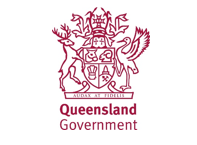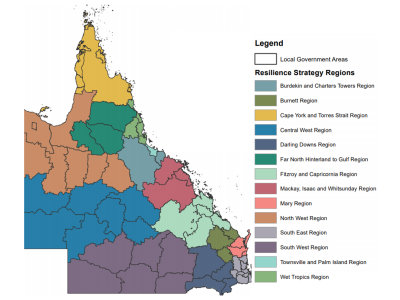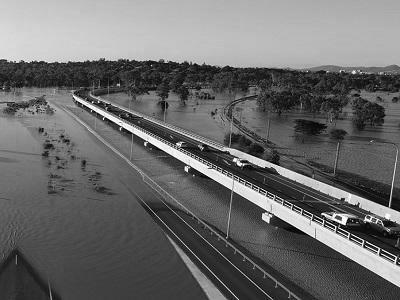Queensland Strategy for Disaster Resilience
On this page:
The Queensland Government is committed to strengthening disaster resilience so our communities are better equipped to deal with the increasing prevalence of natural disasters. The Queensland Strategy for Disaster Resilience 2022-2027 (QSDR) promotes a systems approach to resilience that connects with a range of agencies and sectors to deliver improved outcomes for Queensland.
Read the QSDR
About the QSDR
Queensland is the most disaster impacted state in Australia, and Queenslanders are susceptible to a variety of hazards including flooding, severe weather, cyclones and bushfires. We are facing unprecedented change in both our current and future operating environment with a dynamic political, social, economic and policy landscape surrounding disaster risk reduction and resilience. This is being amplified by natural hazards becoming more frequent and intense due to a changing climate.
Over the past decade, our thinking has evolved. We’ve moved from having a reactive approach to recovery to an approach that is strategic, proactive and planned. Our approach to resilience is locally-led, regionally coordinated and state supported.
There’s been greater recognition that more work needs to be done. Looking forward, we need our leaders in communities, governments and other organisations to consider and recommend resilient results when making decisions, investments and developing core services, products, infrastructure and mitigation activities. The updated QSDR is for all Queenslanders – governments, businesses, individuals and communities – because stronger, safer and more resilient communities benefit everyone.
The QSDR aims to embed resilience activities into business as usual and mandates the need for collaboration across stakeholders to ensure the 4 objectives,19 strategic commitments and 52 actions are clearly outlined with agreed responsible lead agencies for delivery.
The QSDR was developed following extensive consultation with partner delivery agencies and identifies new strategic commitments that will embed disaster risk reduction and resilience into decision making, and address systemic disaster risk by coordinating across stakeholders and sectors. Risk reduction will be enhanced through capacity building programs, and there will be a focus on aligning investment pathway opportunities to local needs.
The QSDR will build on the excellent work completed to date. Every region across Queensland is now part of a locally-led and regionally-coordinated blueprint to strengthen disaster resilience. The Regional Resilience Strategies were completed as a deliverable under the previous QSDR and as a commitment under the United Nations Office for Disaster Risk Reduction (UNDRR) Sendai Framework.
With the new QSDR, we can continue that momentum, and strengthen the lines of resilience across human and social, built, economic, environmental and roads and transport.
Investing in disaster resilience
Learn how momentum is building to invest in, and reduce systemic climate and disaster risk within the rapidly changing risk landscape at the international, national, state, regional and local levels. This document also shows how priorities at the state, regional and local levels are reflected in both the Queensland Strategy for Disaster Resilience 2022-2027 (QSDR) and the 2021-22 Southern Queensland Floods State Recovery and Resilience Plan 2022-24 (SRRP).
Queensland’s Resilience Journey
Learn about Queensland resilience journey so far including past challenges and achievements from 2010-2021, and our resilient future including current challenges and aspirations for the next five years from 2022-2027.
Media statements

(External link to https://statements.qld.gov.au/statements/96175)

